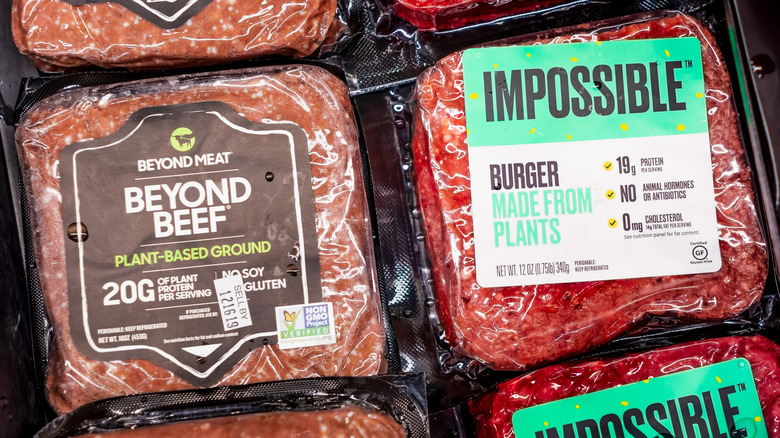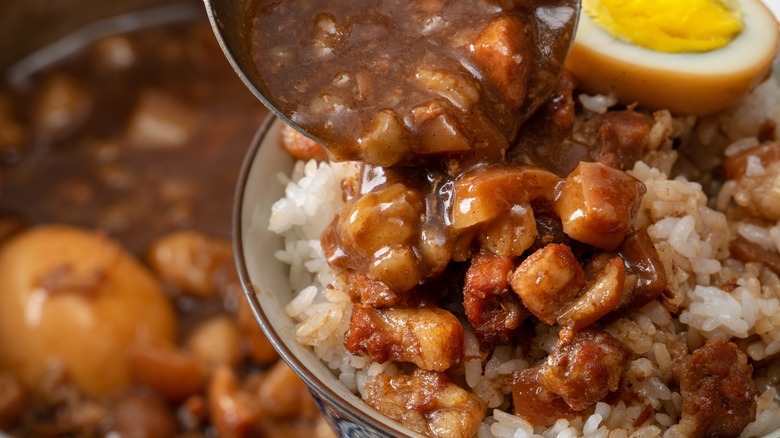How To Braise Plant-Based Meat To Perfection
Plant-based meats may be getting increasingly indistinguishable from animal meats, but there are still some key differences in flavor, handling, and preparation. Though working with these alternative meats at home can seem difficult, as long as you know the basics, it's easy to whip up a plant-based meat feast in your own kitchen that rivals a dish at your local vegetarian restaurant.
Cooking methods with big, bold flavors are the key to cooking plant-based meats, as these ingredients tend to be able to take in a lot more flavor than they give off. Braising plant-based meats such as Impossible Foods or Beyond Burger goes a long way in ensuring the final product is tender, and allows the braising liquid to seep into the meat and provide additional flavor. Just be careful: Plant meat doesn't cook the exact same way as animal meat, and since there's less fat to render off, the meat can get dry and burnt quickly. To prevent this, cook the meat and the braising sauce separately, then add the meat back in right at the end. This way, you'll avoid overdoing your dinner.
Shorter cook times for maximum success
Plant-based meats tend to cook much more quickly than animal meats. When you cook an Impossible Burger, it takes about two minutes per side; compare that with a beef burger, which cooks three to four on each side for medium doneness. Due to this, adapting recipes requires some timing adjustment to prevent your meat from burning, drying out, or otherwise degrading the texture.
While braising can help prevent dryness, overcooking should still be avoided — so brown your meat and cook your braising sauce separately. You can brown plant-based meat the same way you would brown any meat, using oil and heat in a pan. Set the meat aside once it's cooked and work on your braising sauce. Let the sauce flavors coalesce and the liquid thicken, then a few minutes before finishing, add the browned meat and simmer. The result will have a much more appealing texture than cooking the meat down into mush.
General tips for braising
If you haven't braised before, never fear — it's simple. Braising is a wet cooking method, done typically by first browning meat and aromatics in a pan and then covering them with liquid to stew and cook down. This technique is often used with meat cuts like short ribs, lamb shanks, and chicken thighs, but can be used for just about any meat, as well as vegetables such as braised leeks or mushrooms.
You can use many different flavor profiles for braising, from beef stock and red wine to soy sauce, scallions, and ginger. As long as there's a flavorful liquid to cook your ingredients in, you can braise (though pairing meats with complementary braising flavors is always ideal).
As a rule of thumb, you'll want to cook your aromatics until browned and fragrant in a deep, high-sided skillet or Dutch oven. Deglaze with your liquid or mix of liquids, then add in your herbs and cover with a lid. Simmer low and slow until the sauce is thick and the meat is tender. In the case of plant-based meat, however, follow the instructions above, and add the pre-browned plant meat near the end for a quicker simmer.


